Piolets d'Or Announces the "Significant Ascents" of 2023
This list of 68 climbs is effectively a "long list" used to select nominees of the prestigious alpine award.
Sarah Kingdom takes us across the Zambezi River and into Botswana. Driving past the well visited national parks, and onto the huge Central Kalahari Game Reserve.

Crossing the Zambezi River from Zambia to Botswana, at Kazungula, on a rickety ferry is a good introduction to the frontier town feel of Kasane. By the time you have completed the crossing, waded through the paperwork required both sides of the border to clear yourself and vehicle, and driven the few kilometres into town, you feel like you could be in the ‘Wild West’. Kasane is full of people and vehicles from all number of countries, heading in and out of nearby Chobe National Park, or shopping for supplies, stocking up on fuel, searching for spare parts and doing maintenance on their vehicles, so they can venture even further afield.
We were fortunate enough to be spending a couple of nights at Cresta Mowana; built around a giant baobab tree, in grounds full of huge trees and perfectly positioned on the banks of the Chobe River, away from the hustle and bustle of town. Without even leaving our verandah we could see an array of birdlife. Hundreds of weavers, robin chats, several pairs of paradise flycatchers, shrikes and numerous, nameless ‘little brown jobs’ that flitted past too quickly to identify. Three enormous monitor lizards prowled amongst the rocks in front of our verandah and a large male bushbuck patrolled past our room regularly.
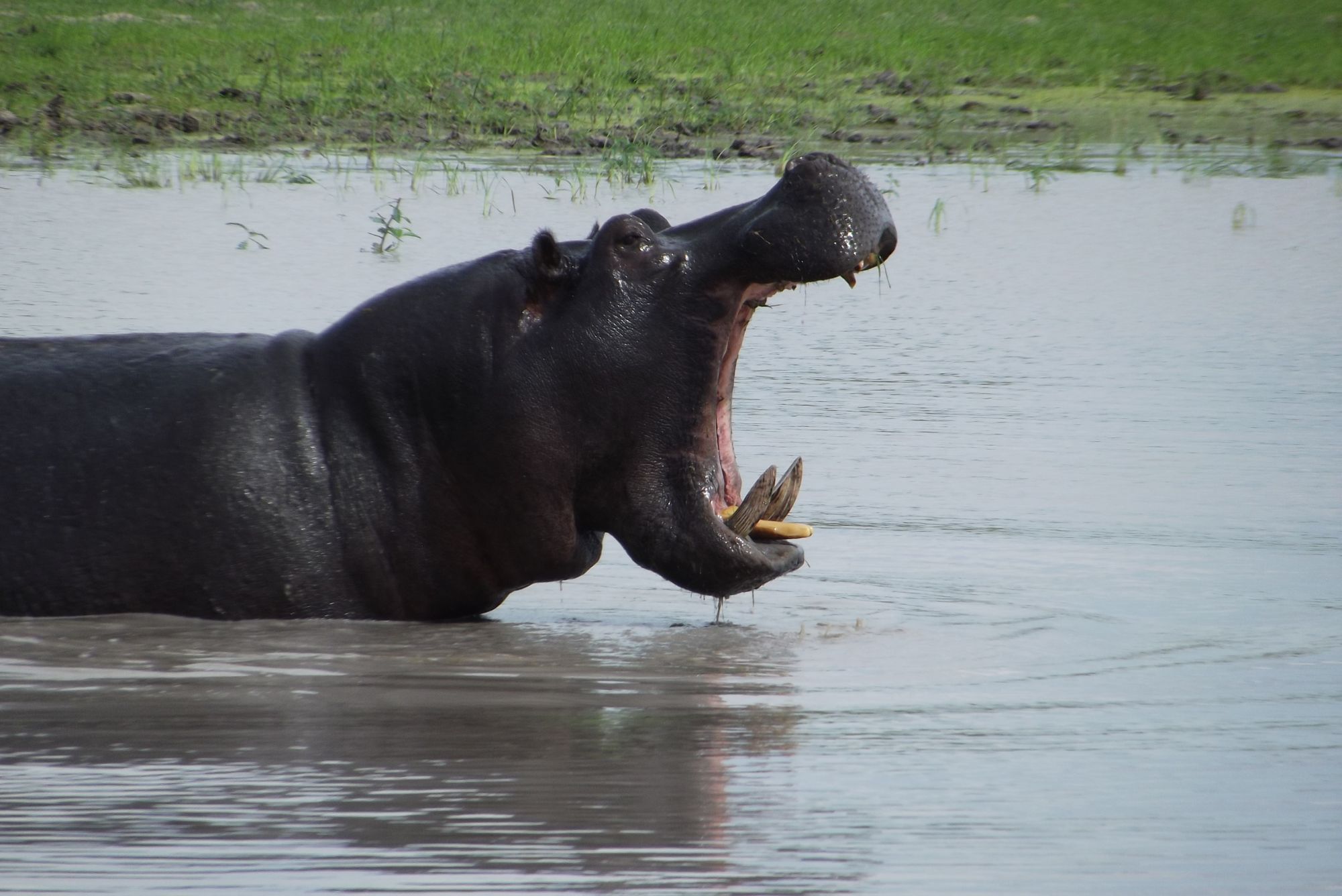
A visit to Chobe would not be complete without a boat trip on the Chobe River, into the park. For a country that is usually so dry, and where water is so scarce and valuable that their currency, the Pula, is named after it, I had chosen a remarkably wet afternoon for a ‘sunset cruise’. The sun was hidden behind dark grey clouds and was clearly not going to appear in time to ‘set’. The river banks were lined with bedraggled, damp impalas, red lechwe, kudu and waterbucks, hippos looked almost as wet on the land as they did in the water. Squacco, Purple and Black herons waded in the shallows. Cattle Egrets and Open Billed Storks followed behind a grazing hippo, snacking on insects disturbed as he walked. An African Marsh Harrier swooped in, snatching a Dikop out of a flock congregating on an island. Drifting on we found four Pied Kingfishers sitting on the branches of a partially submerged tree, each with a fish in its beak, which was repeatedly beaten on a branch to ‘tenderise’ before swallowing headfirst and whole.
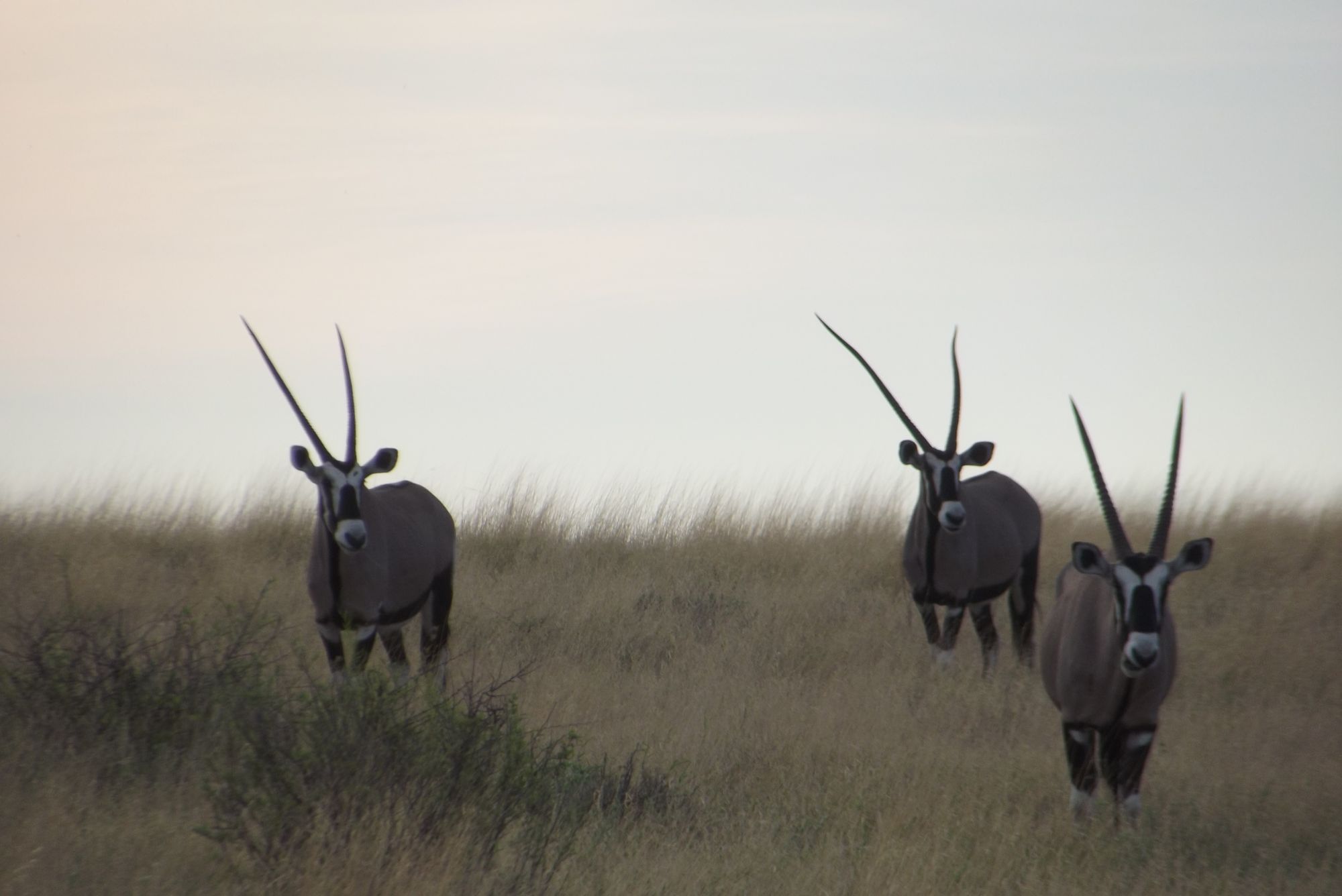
After a couple of days relaxing on the banks of the Chobe River it was time to move on to somewhere we had never been before, and were very much looking forward to… the Central Kalahari.
For my 21st birthday, a family friend had given me a copy of Mark and Delia Owen’s book, Cry of the Kalahari, about their seven years living and researching in the Kalahari. It was a book that had resonated with me and filled me with a desire to visit and see for myself what they had seen. Island Mobile Safaris were running our trip, and this was going to be a private expedition into the Central Kalahari Game Reserve that would spoil us for ‘regular camping’ ever again.
“Below us lay the gentle slopes and the open plain of Deception Valley"
Established in 1961, the Central Kalahari Game Reserve (CKGR) covers an area of 52,800 square km, almost 10% of Botswana. Yet few people visit here, only a handful in any given year. 210km from Maun we arrived in the dusty village of Rakops, where we decanted into game drive vehicles and headed off into the wilds. 45km from Rakops we entered the park, another 45km and we arrived in the Deception Valley. In 1974, when the Owens had arrived here they wrote… “Below us lay the gentle slopes and the open plain of Deception Valley, an ancient fossilised river channel meandering through forested sand dunes. Herds of springbok, gemsbok, and hartebeest grazed peacefully on the old grass-covered riverbed, where water used to flow. The blue sky was stacked high with white puffs of cloud. Deception was incredibly serene and all we had hoped it would be.” Forty-five years later, as we arrived, it was as if nothing had changed. Herds of slender, long-legged springbok were waiting for us and the plains were alive with gemsbok, with their distinctive facial markings, black-stockinged legs and white socks.
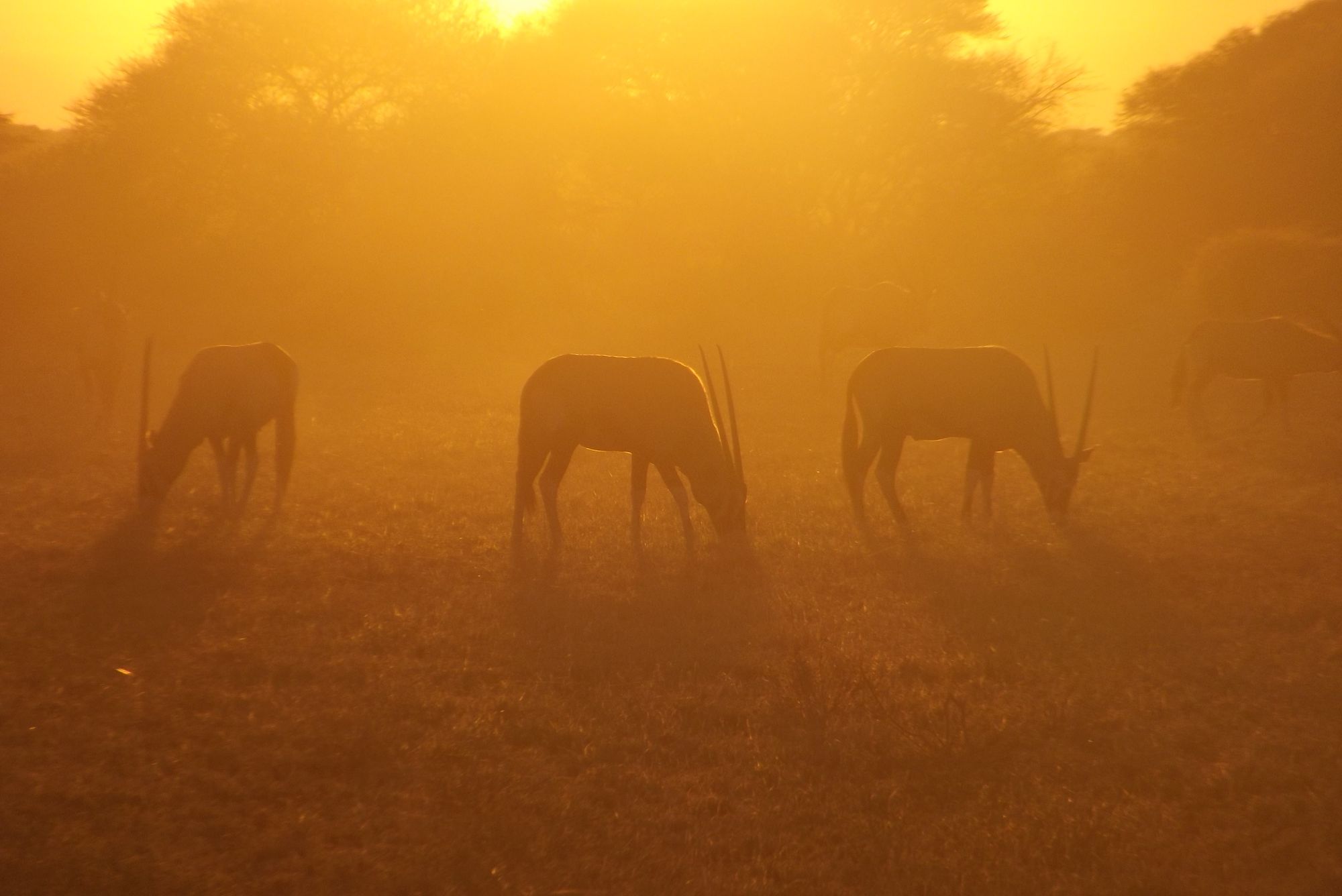
Everything was set up and ready when we arrived at camp. Spacious tents set out under trees, with, to my husband’s delight, proper camp beds with mattresses, pillows and sheets, even an ‘ensuite’ bathroom with loo and bucket shower… all the creature comforts of home in fact, but in a unique and beautiful location. A large open-sided mess tent housed the dining area and bar, would be the central meeting place for us all to eat, drink, relax and discuss in the days ahead.
Our first-afternoon game drive gave us a taste of things to come. Kori Bustards (Botswana’s national bird), paraded proudly across the landscape displaying, with comically puffed out neck feathers. The vibrant orange beaks of Pale Chanting Goshawks, vivid blue necks of Helmeted Guinea Fowl, velvet black markings on Northern Black Korans and the startlingly bright red of the Crimson-Breasted Shrikes all stood out in the sun-bleached landscape. Wildebeest, giraffe, ostrich, numerous jackals, a civet and a wildcat all added themselves to our list of sightings that afternoon. But for me the star of the show, as the sun went down on our first night in the Kalahari, was the bat-eared foxes. These diminutive insectivores, who only average 55cm in length, really stole my heart and we would catch glimpses of them regularly throughout our stay, usually close by their burrows, often with their kits close by.
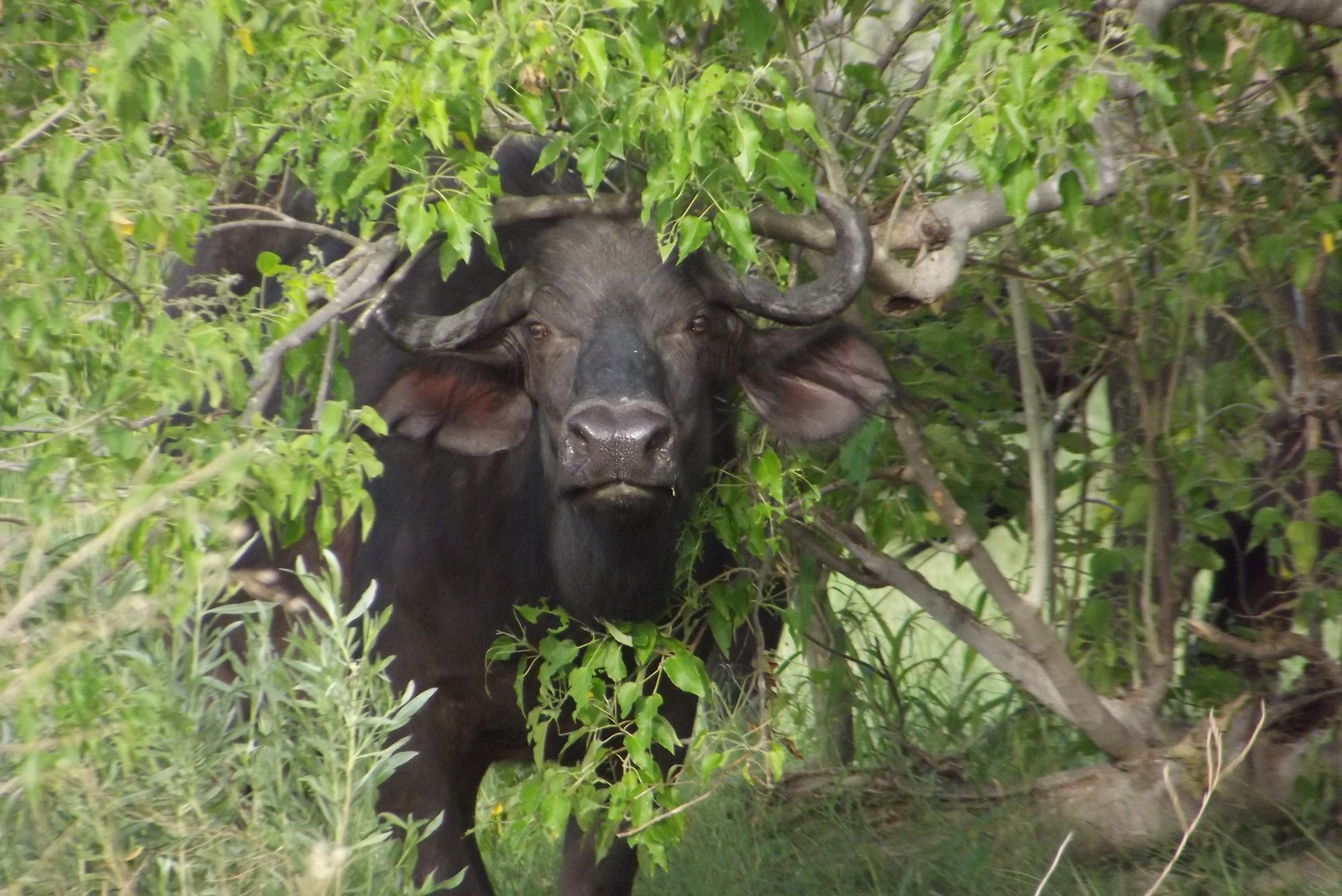
Back in camp that night, we relaxed with drinks by the fire. The youngsters inspected the campsite, with an ultraviolet torch-light, looking for unwanted critters, particularly in the bathrooms and under the beds. We were summoned to inspect a scorpion who glowed luminously under the light on the fringes of camp. The moon rose, just a sliver in the sky, as we ate our dinner and retired to bed, in preparation for the early wakeup call we knew would be coming in the morning.
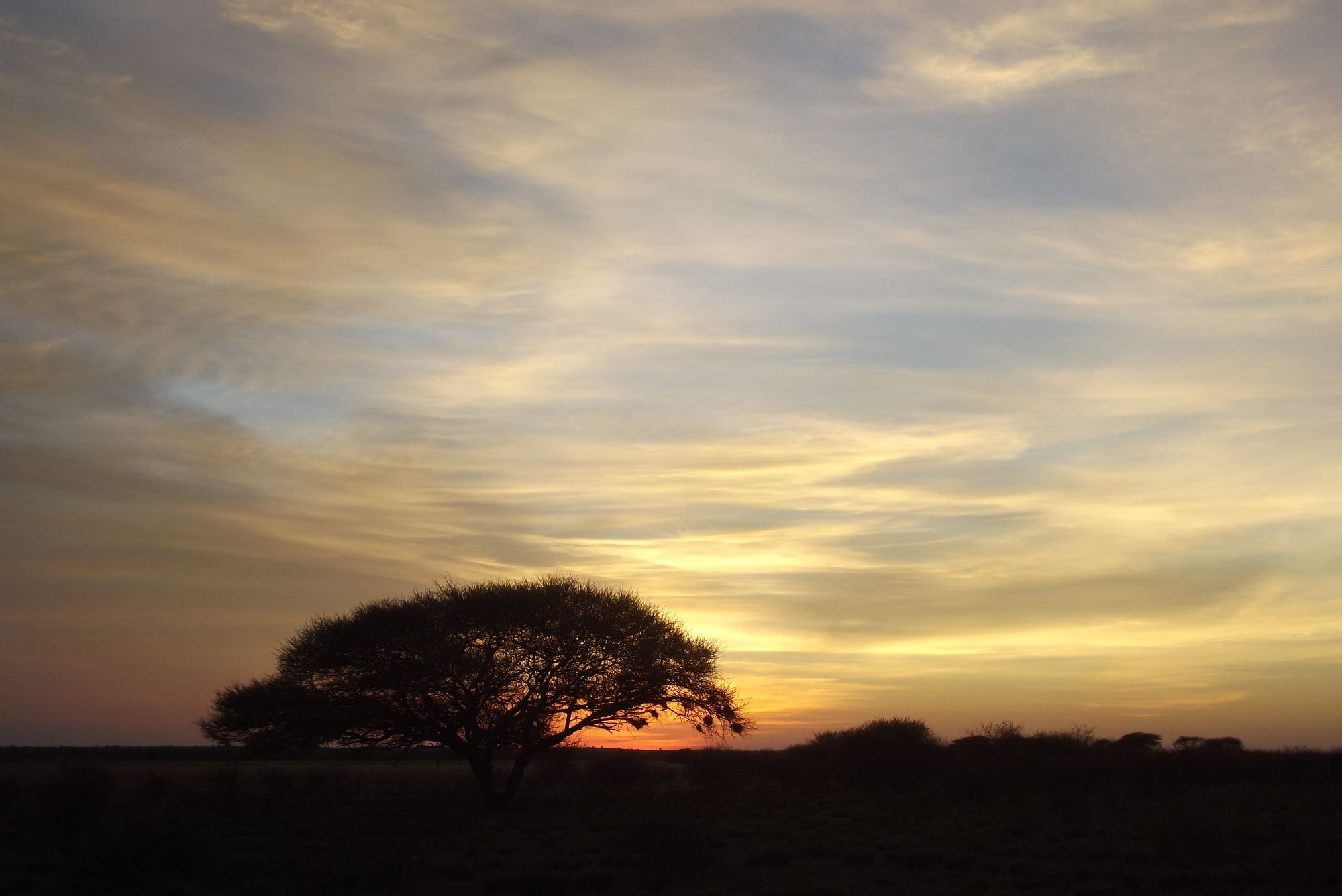
Morning came and the White Browed Sparrow Weavers were up early, getting a head start on the heat of the day. We could hear them long before we were ready to get up. We had a light breakfast and set off into the park, as the sun rose, watching the world wake up around us. We had the place to ourselves. In fact, we only saw one other vehicle the entire time we were in CKGR.
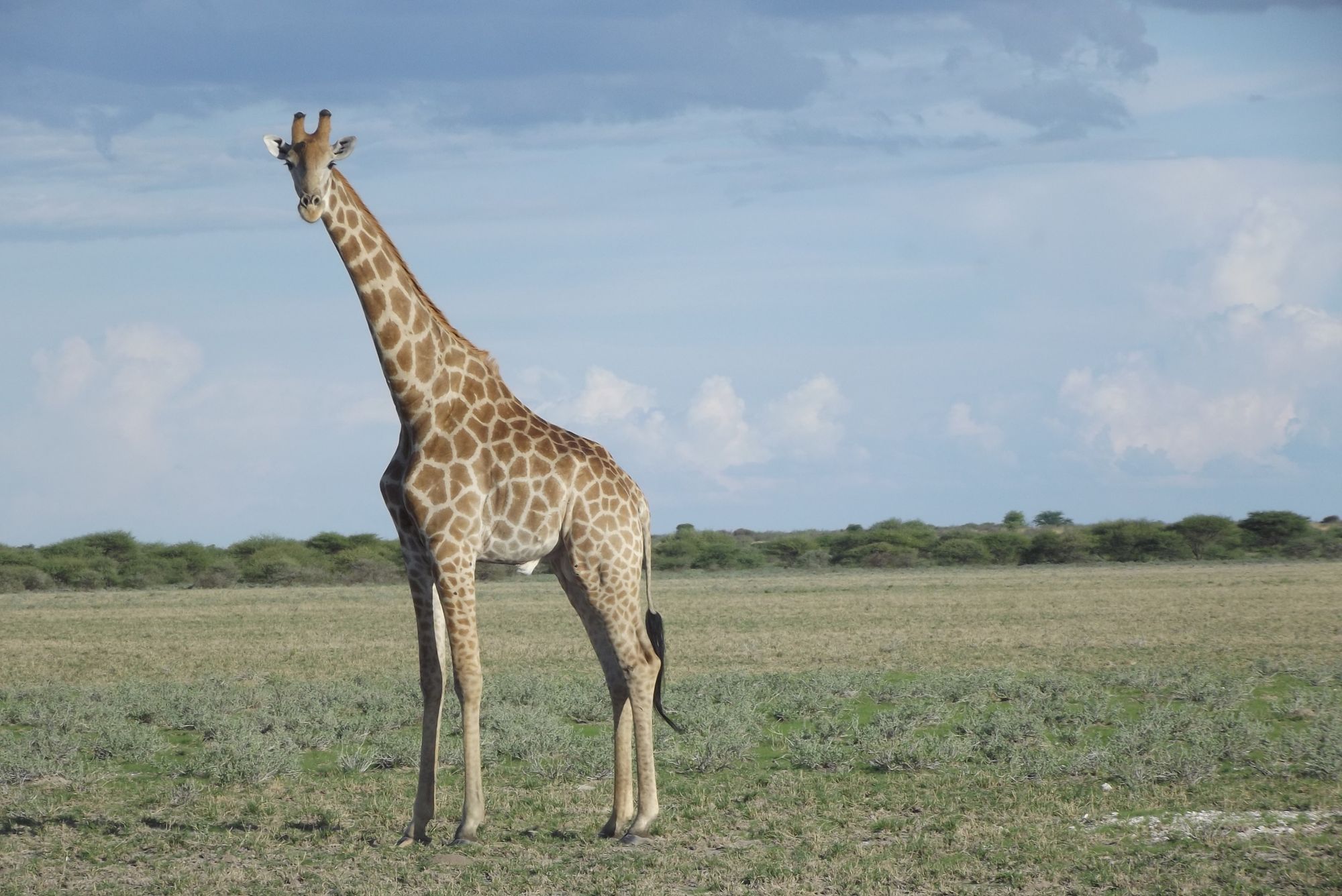
Heading deeper into Deception Valley we found a pair of mating lions, who were not remotely perturbed to see us. Stopping for coffee under some acacia trees we watched several giraffes, ambling across the plains, pausing, from time to time, to gaze at us curiously. A little later we spotted a cheetah. A pale, one-eared female, looking worn and weather-beaten, and her two companions, both younger, darker and in much better condition. As we headed back to camp in the afternoon, we saw this same three cheetah again, walking down the road ahead of us. We would also, rather unexpectedly, given the lack of standing water in the park, see two bull elephants. A perfect ending to a perfect day in the Kalahari.
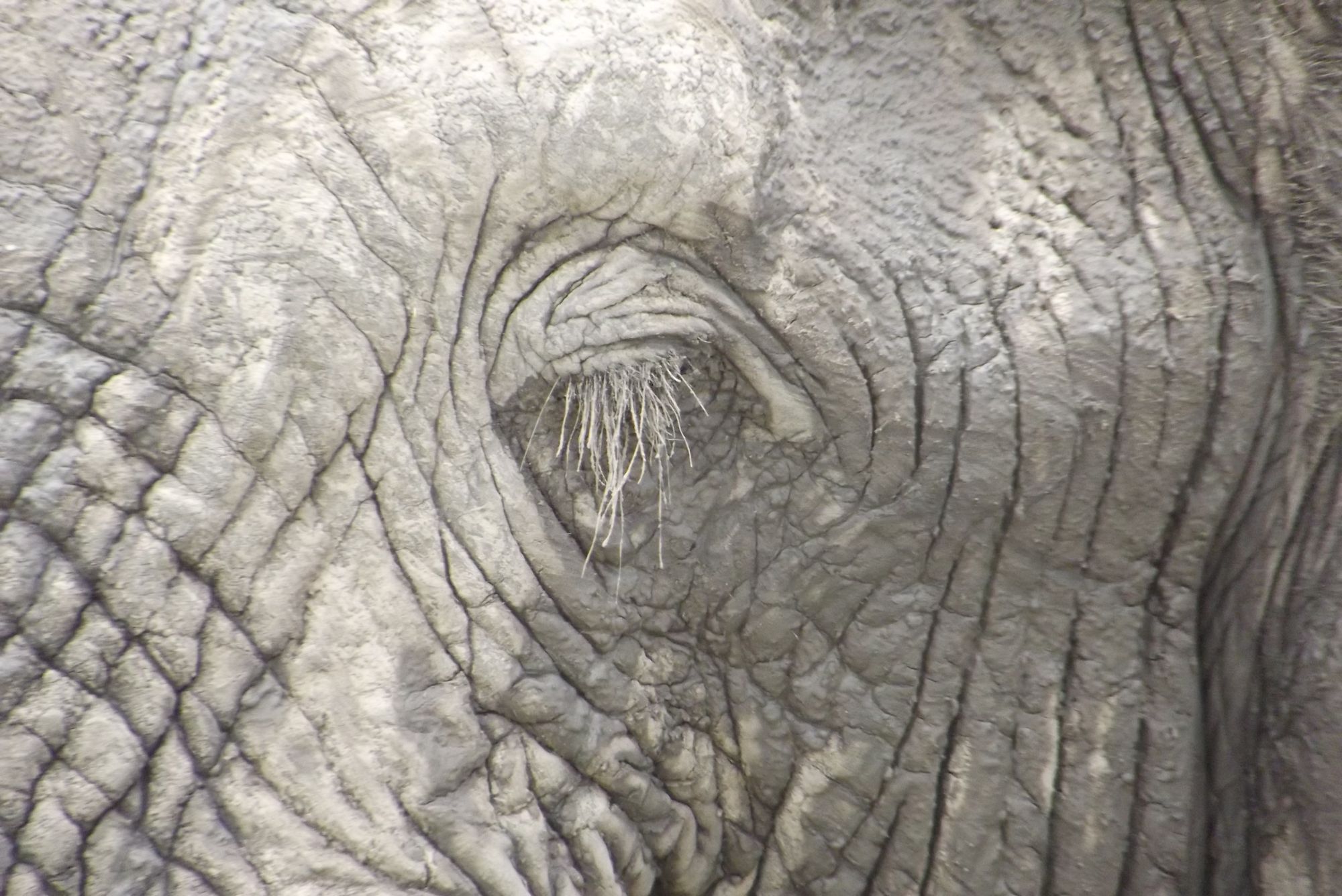
The following morning we set off in the opposite direction, towards Passarge Valley. Reaching Passarge we saw hundreds of gemsbok grazing, interspersed with wildebeest and springbok. Numerous pairs of jackals scurried back and forth, noses down investigating enticing scent trails. A couple of jackals, in particular, drew our attention as they sniffed the ground, scampered about and generally looked excited. A nearby group of gemsbok stared intently in one direction. Stopping to examine the scene more closely, we decided that something was definitely going on. As we got closer we found four lions on a freshly killed gemsbok carcass. A young male gave a low growl, clearly disliking our presence, and a female, in an impressive feat, dragged the kill, weighing an estimated 150kg, away, concealing it under a bush. Not wanting to disturb them further we retreated, leaving them in peace.
[gallery type="rectangular" size="full" link="file" ids="12071,12069"]
That evening, back in the Deception Valley, we stopped for sundowners on a wide open plain, watching as giraffe and springbok grazed. The day had been hot, but as the sun sank in the sky, the air cooled, and lightning illuminated vast clouds far away on the horizon. Heading back to camp and dinner we came across yet more lion and then, just as it was getting dark, we saw the animal I had wanted to see since I had first read the Owen’s book, a brown hyena. Just visible in the fading light, the hyena with its long shaggy dark brown coat, short tail and pointy ears trotted past. The brown hyena is the rarest of the hyena and listed as ‘near threatened’ on the IUCN Red List, with a global population estimated to be less than 10,000, and here we were, seeing it for ourselves, on our last night in the reserve.
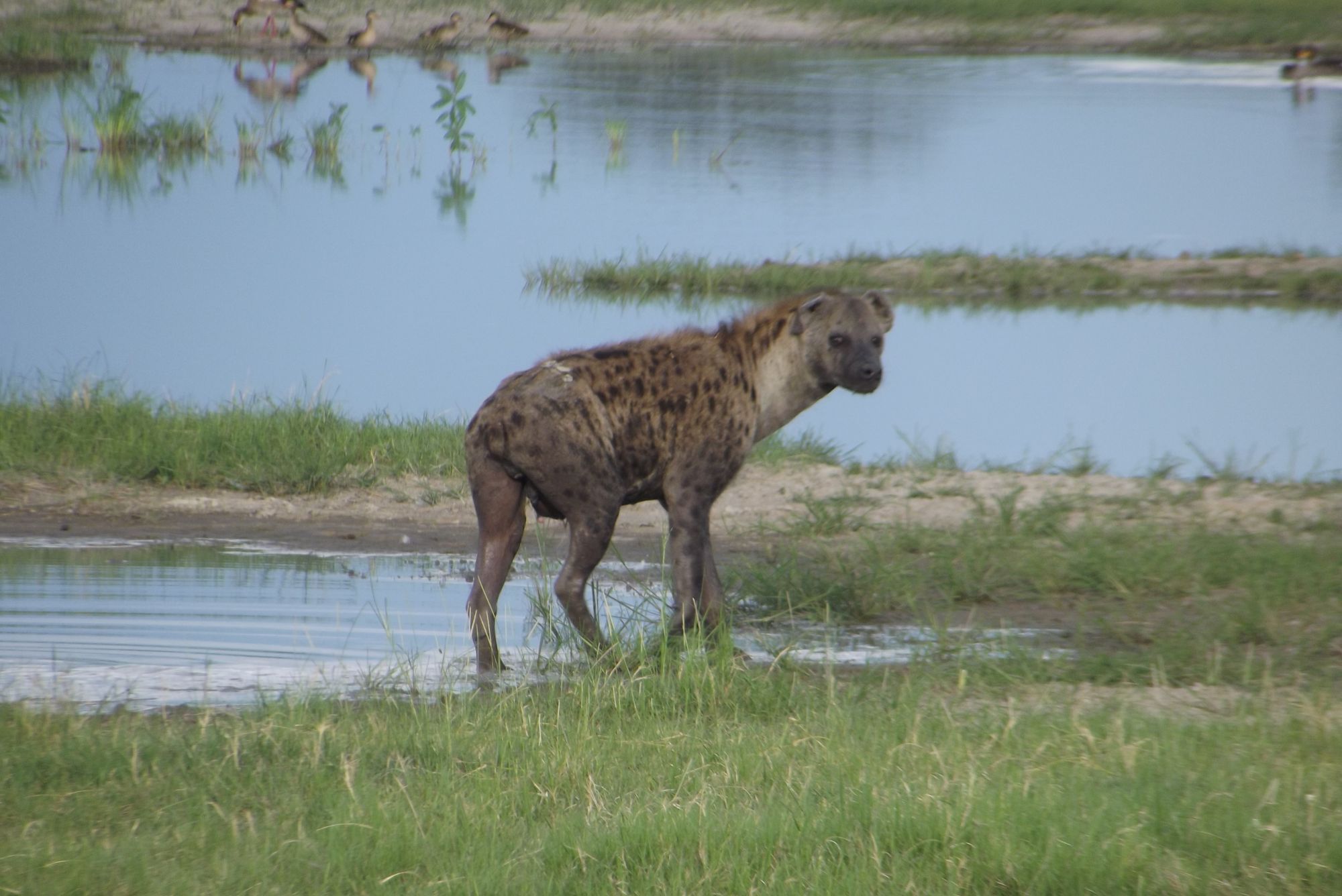
Nothing prepares you for the feeling of the immensity of CKGR, nor its raw beauty. There is a real sense of unending space, of having the place to yourself. Wide, empty pans stretch interminably, appearing like endless stretches of saucer-flat earth, occasionally punctuated with dwarfed trees and scrubby brush. By day the sky seems vast and wide, and at night brilliant stars dominate. The next morning we had to pack and say goodbye to this special place, but the reserve was not done with us yet. As we drove out, heading back to civilisation, reclining on a large anthill, like a throne, a magnificent leopard surveyed us regally and then almost with disdain, averted her gaze until we drove away.
After our stay in the dry heat of the desert, it was time for a short visit to Moremi Game Reserve, breaking our journey with a night in Maun at Island Safari lodge. The lodge, nestled under a canopy of tall trees, on the banks of the Thamalakane River in a 300-acre private reserve, was the perfect place to relax in ‘civilisation’ before heading off to ‘tent life’ again.
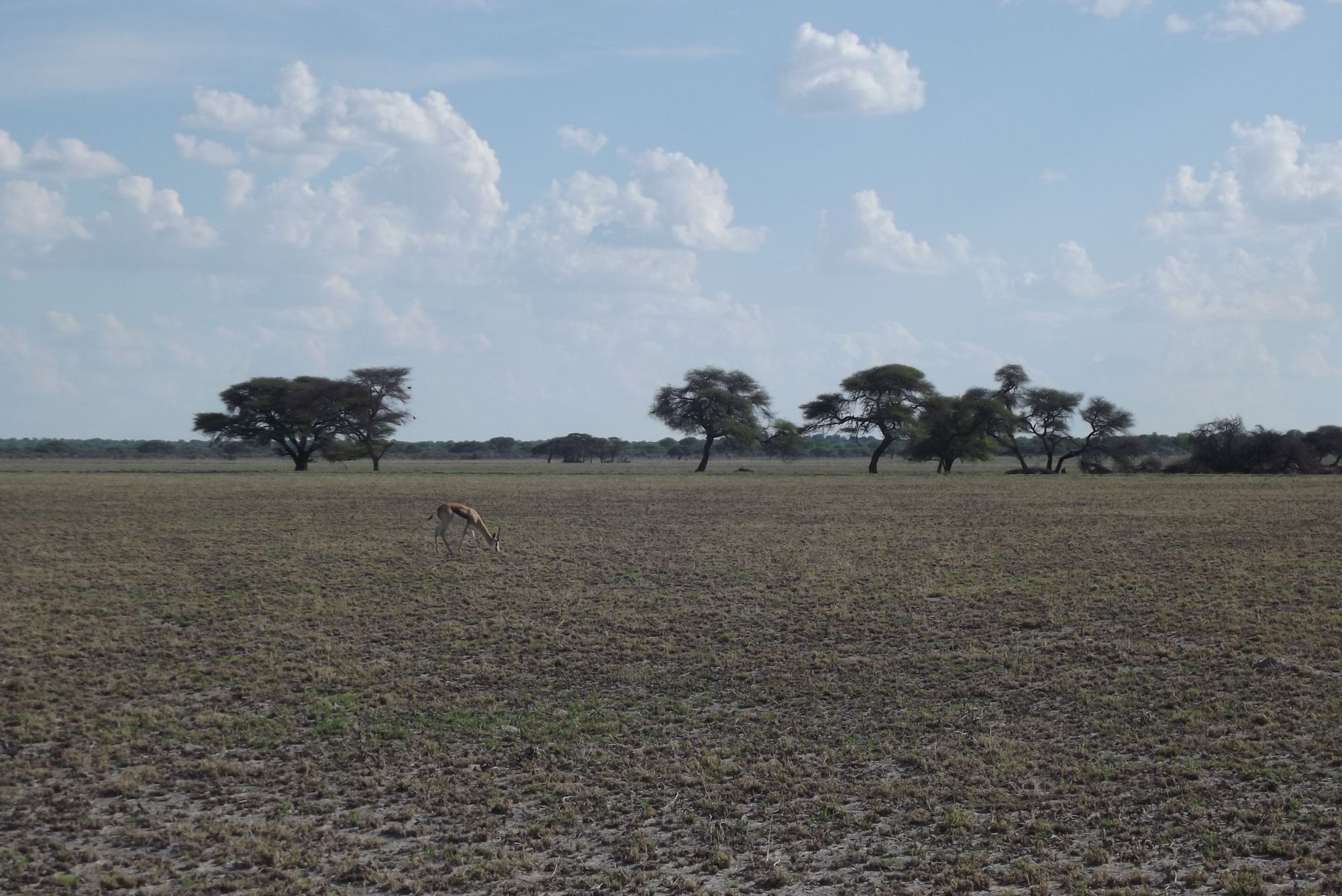
Moremi covers the central and eastern parts of the Okavango Delta (about 40% of the Okavango). The lush green of Moremi was an incredible contrast to the Kalahari. The vegetation in the reserve ranges from savannah to palm covered islands, waterways, lagoons, grasslands, Mopane woodlands and acacia forests. Sausage trees abounded and our campsite at Second Bridge was home to several of these beautiful trees. The flood plains were full of reedbuck, red lechwe, hippo, tsessebe, zebra and large groups of elephants. We were lucky enough to see, in broad daylight, the usually nocturnal civet and honey badger. The lagoons and wetlands teemed with water birds; from the African Crakes, Lesser Jacanas and Slaty Egrets to the gracious Wattled Cranes and African pygmy geese. We saw the African Red-eyed bulbul and the Black, Coppery-tailed and Senegal Coucals. Martial, Tawny and Black-chested snake eagles abounded, as did magnificent Fish Eagles.
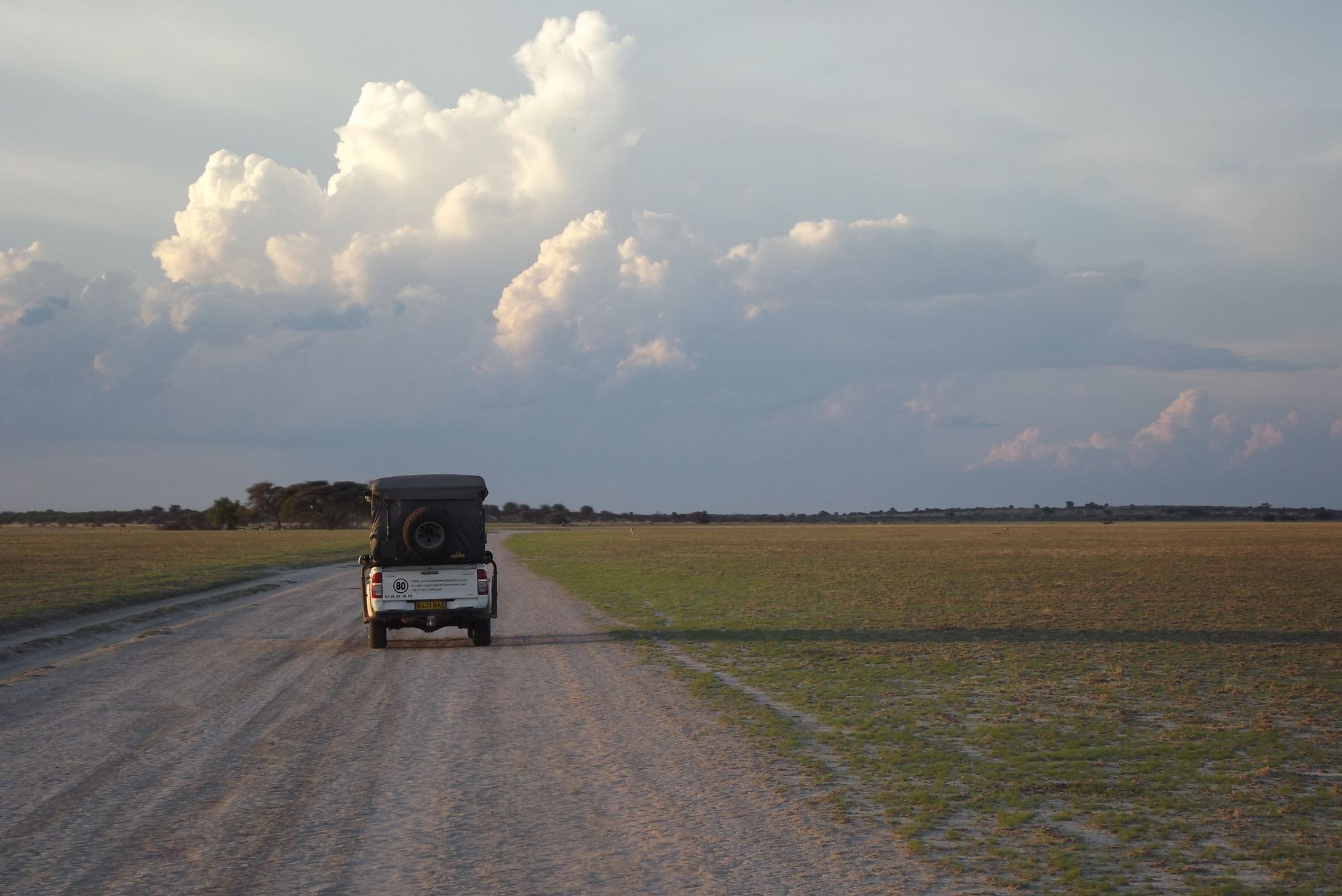
On early morning drives through the reserve we saw lions on numerous occasions, the first morning we found a magnificent young male, resting at the base of an anthill and surveying the open grassland before him. Another morning we found a group of six lions; a mother with her sub-adult young. After dark we often heard the lions roaring in the night, one night, in particular, it sounded like they were right outside our tents… no one in camp was brave enough to visit their ensuite loos before sunrise!
[gallery size="full" type="rectangular" ids="12067,12074"]
Our final afternoon in Moremi, and we went out for ‘one last look’. Two-spotted hyena, much larger than their brown CKGR counterparts, lay in the cool mud on opposite sides of a waterhole. A group of wildebeest with calves standing nearby cast nervous glances in the direction of the apparently disinterested hyenas. As the sun sank in the sky we had our last and possibly most impressive Moremi encounter. A herd of over 400 buffalo, combined with wildebeest and impala, surrounded our vehicle, silhouetted against the setting sun and in a haze of dust stirred up by their trampling feet, an awe-inspiring finale to our visit.
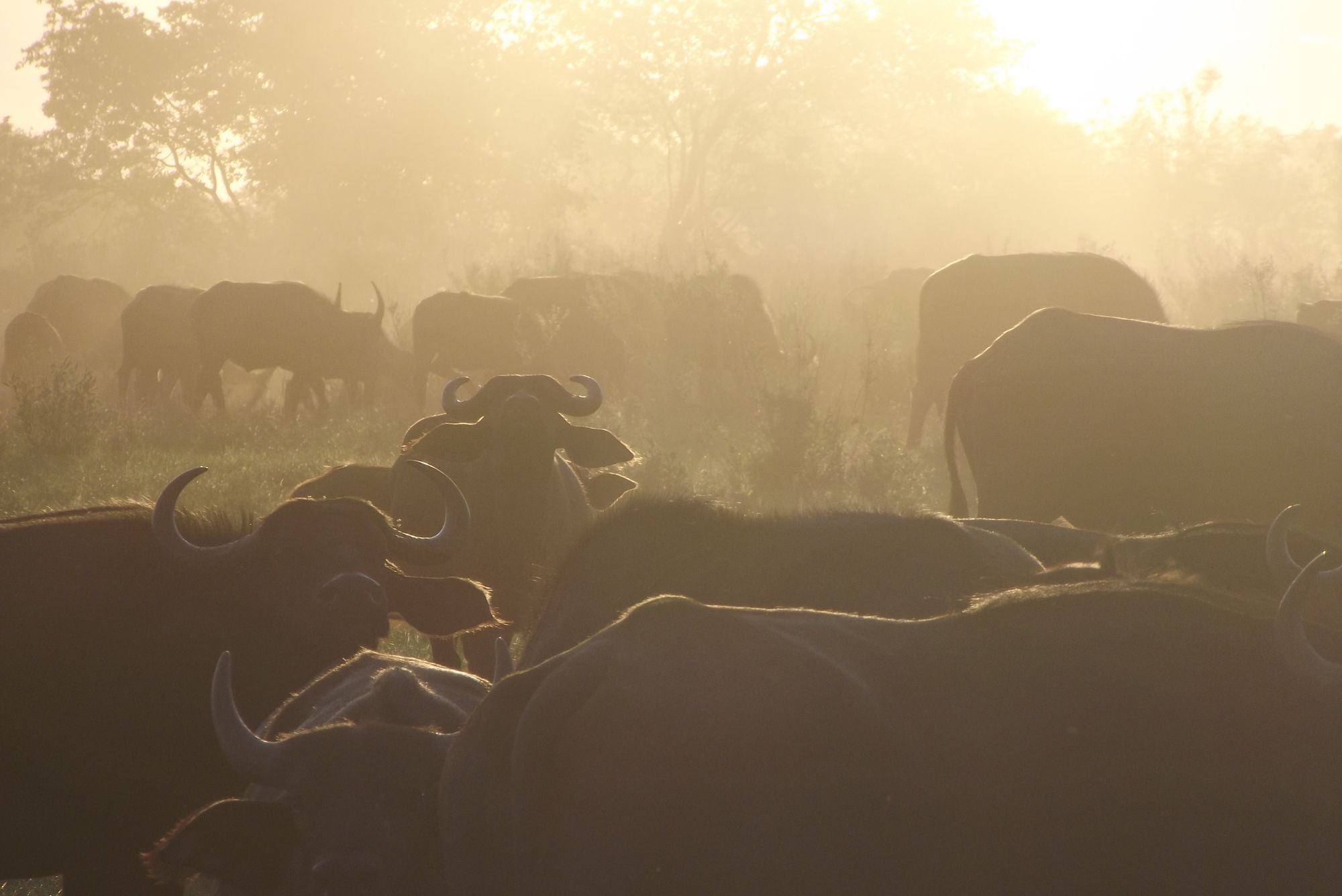
You can find our more about Island Mobile Safaris here, and Cresta Mowana, here.
2nd best newsletter in the universe